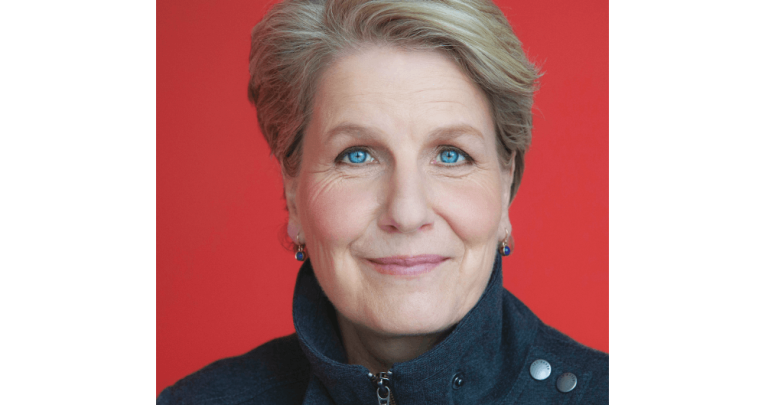‘‘I played hooky for years’’ – Sandi Toksvig on What She Learnt at School

Multi-talented writer and broadcaster Sandi Toksvig on why she was more likely to be found at home reading the Times than in a classroom…

- by Teachwire
- Classroom expertise and free resources for teachers

Where did you go to school?
My father was a foreign correspondent, so we would go to school in whichever country he was covering. My first was in what was then Rhodesia, then I went to a kindergarten followed by a French convent, both in Copenhagen. After that I went to a whole series of schools in America, because I was naughty and kept getting thrown out.
Eventually, when my parents despaired of finding a school that would take me, they sent me to boarding school in England.
And how did you find it?
I was never a big fan of school. My father was never that bothered about it either. He thought we could learn more with him. He thought if we’d read the first three pages of the Times before dinner we’d probably done well.
What did you do to keep getting kicked out?
I was very quick, so I got bored. I used to play hooky, as the Americans call it. I’d just not turn up.
I remember being given The Catcher in the Rye to read when I was 11, so I went home and read it. I didn’t realise that we were supposed to be reading it all year, one word at a time. So I left, thinking, I’ll wait until everybody else has read it, then I’ll come back to class.
What got you through the experience?
I discovered a second-hand bookshop in nearby Guildford, so while all the other girls were buying make-up and sweets, I was spending every penny I had in there. That’s where I educated myself, devouring Edith Wharton, Jane Austen, Emily Dickinson, Thomas Hardy. That was my escape.
Did you always plan on going into writing and broadcasting?
I studied law, archaeology and anthropology at Cambridge, and I’d applied to be a solicitor there, and even worked as a very, very bad telephonist in a solicitor’s (I would do different accents depending on who was phoning). After my third year I went to see my anthropology professor and said I wanted to stay on and do a PhD. She said, “Sit down Sandi, have a glass of sherry and stick to acting.” And that was the end of that.
It seems you took her advice. What was it like working in children’s television on Number 73?
It’s was a huge amount of fun. I always liked to push the educational element of it, respecting the kids and not shying away from difficult issues. I remember the producer saying to me: “That’s a very long word, Sandi, the children won’t have heard of it.” And I said, “Well, they have now”.
Do you think it’s important to challenge children?
Yes, and I think they are absolutely up to it. I’ve done some really energising school visits where we talk about prejudice.
I do this rather old-fashioned trick when I arrive in the classroom. I say “I prefer to have the bright children near me, and I don’t know if you know this, but kids with blue eyes are brighter.” And so they all move around, and the blue-eyed kids look very pleased with themselves.
Then I look at a piece of paper I’ve taken out of my pocket and say, “I am so sorry, I got it completely the wrong way round, it’s brown-eyed children at the front.” So, they start to move around again.
No teary eyes, brown or blue, I presume?
It’s a great way to get into the whole concept of having a prejudice against a particular group of people, and the conversations are phenomenal. First, we talk about how that experience felt.
Then we talk about how prejudices arise and where they’re just silly, and how we need to make sure we don’t fall into the trap of believing such a thing, that a whole group of people could be bad.
Were these ideas inherent in your children’s book, Girls are Best?
There was meant to be a pair of books. Boys are Best was going to be written by a gentleman in the same line of work as me, who shall remain nameless. But he never wrote it. He didn’t think it was necessary, because a lot of boys already feel that way.
I suspect there are thousands of books that tell boys they’re best. But, very few girls are told that, so my book was saying to them that whatever you think happened in history, women have been there. Most of them were written out, unfortunately, but actually, women are amazing, and you can be amazing too.
Why did you write about Irish immigrants during the potato famine in your book, A Slice of the Moon?
It’s a period of history that interests me, but I think it’s a story that is still relevant to today. Obviously, I couldn’t have predicted the horror happening now, but it’s the same story. And I tell these stories from history because everything is cyclical and it will come again unless we keep telling them.
How involved in the history of that era did you get?
I promise you, because I’m so bloody geeky, that every historical detail to the best of my ability in A Slice of the Moon is correct. I’ve just been to the emigration museum in New York and even the tour guides didn’t realise the average Irish person who emigrated to the United States was dead within five or six years of their arrival. It’s extraordinary how tough their life was – the poverty, the terrible diet, the drinking, and sadly with some, the violence against them.
Was having a female protagonist in an adventure story important to you?
Yes. Why not extend the range of characters that we have access to? Most of the heroines of the books I read as a child were just drippy and irritating. Anne of Green Gables, good god! She started out so feisty and marvellous and at the end she decides to get married and not go to college, and you think ‘seriously?’.
So I was disappointed in so many of them. I wanted them to be feisty, I wanted them to be confident, and I wanted them to lead the way.
Read more quotes about reading in our World Book Day post.










